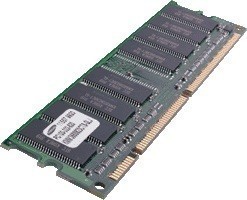The Different Types of Memories
Whether in computer science or in any multimedia device, memories play an important role. Here are several types of memories: The ROM: (Read Only Memory), that means that the memory does not erase the data it contains when it is no longer supplied with electricity, they are NON volatile memories. Several types of ROM exist with each having their own particularity. The PROM: The P of PROM indicates that this type of memory is programmable, but only once because of its physical technology. EPROM memory: (Erasable Programmable Read Only Memory). This type of memory is erasable by exposure to ultraviolet. EEPROM: Electrically Erasable Programmable Read Only Memory. This type of memory is electrically erasable. FLASH memories: these are a variety of EEPROM memory but faster, this type of memory can be erased by complete sector. The flash memories are the best known, we find them in the form of USB key or SD card MICRO etc ...

RAM: (Random Access Memory). This type of memory is volatile, which means that the data it contains will be lost if the power supply stops. RAM is used in computers for data processing because it is much faster, so it provides better performance for the computer.
Virtual Memory: It is stored on the hard disk of a computer and allows the exchange of files when the RAM saturates.
The hard disk: This is a disk that permanently records information on magnetic disks, these data are erasable one by one. The advantage of this storage mode is the space more and more huge (3 TO or 3000 GB in 2011).
SSD disks: Large amount of storage like the hard disk, unlike the speed which is much higher, because the information is recorded on memory chips (electrical) data transfers are almost as fast as on the memory modules .









Post a Comment